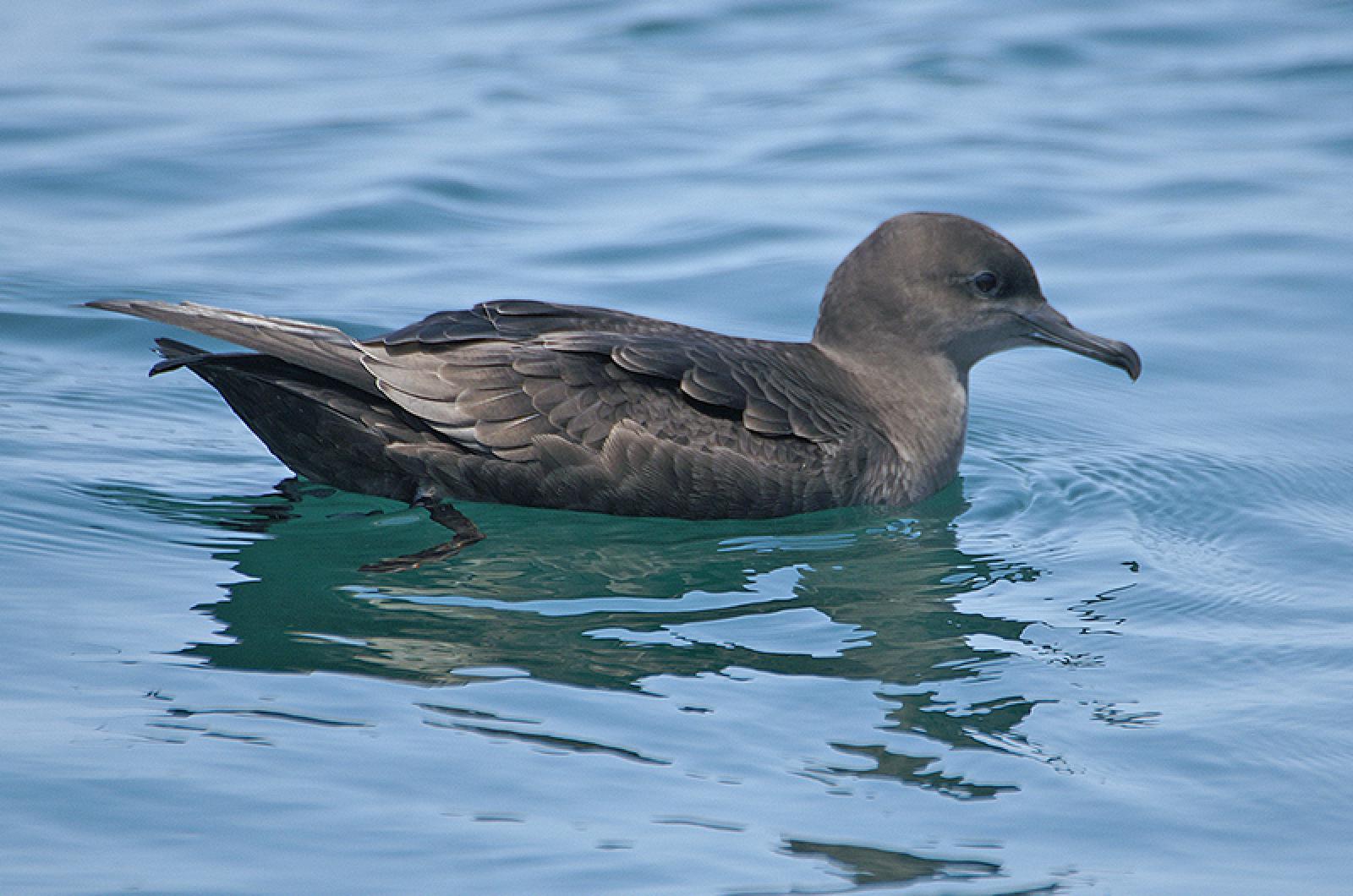This is the time of year for shearwaters. They are never common near us; generally we have to go offshore to see them. But this past week they have been seen from the western tip of Aquinnah. It can be hard to see them from land but they can be seen from Moshup Trail Beach as they rise above the horizon before gliding down out of sight to fly low over the water for a stretch before they rise up above the horizon again.
On June, 14 Matthew Born spotted about 100 great shearwaters offshore of Aquinnah. The next day Bob Shriber spotted six laughing gulls, 14 roseate terns, 55 common terns, five great shearwaters, one sooty shearwater and two great cormorants on offshore boulders mixed in with 33 double-crested cormorants. That same day, Allan Keith found a few great shearwaters, five sooty shearwaters, a parasitic jaeger and some roseate terns off Aquinnah. Then, on June 19 he saw a couple of Cory’s shearwaters and some likely great shearwaters that were too far offshore to confirm. Bob Shriber reports that, also on June 19, Shea Fee spotted a huge flock of a couple hundred great shearwaters, a number of sooty shearwaters, and a Manx shearwater.
My family and I went up to the Gay Head Cliffs on the afternoon of June 20. We didn’t see any shearwaters from the cliffs but walked down to Moshup Trail Beach where we could see them a quarter mile offshore as they were doing their dynamic soaring with the wind – visible as they rose up above the horizon and then soared down to just above the water, over and over again. There were at least 150 of them, including five definite great shearwaters, 15 sooty shearwaters and one Manx shearwater. There also were three northern gannets flying around out there, too.
There are lots of live shearwaters around, which may explain why so many have been found dead on our beaches. So far I have received reports of 69 dead greater shearwaters from Phil Edmundson, Amy Vohsing, Martha Otis, Alexandra Nash, Dave Radcliffe, Morgan Hodgson, Bob Shriber and myself. The reports come from all areas of the Island, including about seven miles of beach at Philbin Beach, Lighthouse Road, Lobsterville Beach, Cedar Tree Neck, the Lambert’s Cove Beach area, State Beach and the south shore of West Tisbury. Since these beaches are from all sides of the Vineyard, let’s say that these numbers are a typical sample comprising about one-eighth of the Vineyard’s approximately 60 miles of shoreline, suggesting that we might find about 550 dead shearwaters if we walked the entire shoreline.
Why are they here? Richard Veit, an ornithologist from Nantucket, suggests these dying birds probably fledged in April or May from their south Atlantic nesting grounds on Tristan da Cunha and Gough Island. They then embark on an arduous approximately 7,000 mile flight across the tropical Atlantic Ocean to arrive on our shores, where food is not abundant and is becoming less abundant every year as the oceans warm. Some mortality happens during this migration every year as most fledglings do not survive their first year. The magnitude of this year’s die-off is extreme: we usually only find a few dead shearwaters on our beaches in June.
A variant of the avian flu has caused a major die-off of seabirds (gulls and skuas) in Scotland. The disease was transported across the northern Atlantic a few months ago, causing some snow geese and domestic poultry to become sick and die. This flu seems an unlikely cause of the mortality we have observed since the shearwaters were in the south Atlantic, far from any infected birds when the flu was transported to North America.
A few other noteworthy birds showed up this week. On June 15, Allan Keith spotted a cattle egret, a small white egret that is not reported every year — in the high tide flooded marshes of Lobsterville. Also that day in Aquinnah, Shea Fee reports finding a couple of purple martins and Allan Keith saw one of the martins as well as lingering surf and white-winged scoters and four common eiders.
On June 16 Matthew Born spotted a great blue heron and a peregrine falcon near Clay Pit Road in Aquinnah. Pete Gilmore and Shea Fee spotted a late ring-necked duck on the June 18 BioBlitz at Long Point. This species is regularly found in the late fall and during the winter but they are usually long gone by now. Phil Edmundson walked South Beach in West Tisbury on June 19 and found three lesser black-backed gulls.
Lingering shorebirds include two ruddy turnstones found at Little Beach by Cynthia Bloomquist and Thaw Malin on June 14, and five least sandpipers along the Menemsha Pond shoreline sighted by Mary Makepeace on June 18.
On the songbird front, Margaret Curtin spotted a at Windy Gates on June 17. On June 18 Matthew Born saw another black-and-white warbler in addition to a bobwhite and a cedar waxwing. Also on June 18, Walt Looney visited the state forest and spotted two red-breasted nuthatches.
Steve Allen reports that Felix Neck’s Early Birders program has started for the season; the June 16 walk had 16 participants and found 33 species including great blue heron, great and snowy egrets, willet, common yellowthroat, and prairie and pine warblers. Please join Steve Allen every Thursday at 8 a.m.
Please email your sightings to birds@mvgazette.com.
Robert Culbert is an ecological consultant with Nature Watch LLC living in Vineyard Haven.











Comments
Comment policy »